Swedish air defense. Part 2
Since the middle of the 60, despite the declared neutrality, the Swedish air defense system has actually been integrated into the NATO air defense system in Europe. In Sweden, even earlier than in NATO, the creation of an automated control system for active air defense systems STRIL-60 began. Prior to this, the STRIL-50 system operated in Sweden, combining fixed-line radar stations, visual observation posts on the coast and several operational centers, which manually collected, processed, displayed and promptly supplied information necessary to solve air defense tasks. The system "Stril-50" copied the British air defense system, the entire territory of the country was divided into 11 sectors.
The computerized system "Steel-60" was developed by the military department together with the British company Marconi Electronic Systems, the system provided control not only of fighter-interceptors, but also of anti-aircraft artillery, anti-aircraft missile systems and air defense systems fleet. Some elements of the system began to be commissioned in 1962. In 1964, the development of a key part of the automated control system (ACS), the Digitrak radar information processing and display equipment complex, was completed. The Digitrak information display complex, developed by the Swedish company SRT, at that time had no analogues in European NATO countries by a number of characteristics. Its main elements were: Sensor computer, airborne indicators, azimuthal sweep unit, symbol generator, and communications with other data centers. The parallel operation of several computers (up to 16 pcs.) Was ensured, which was possible due to the creation of an internal computer network, which was a great achievement for the mid-60s. One Sensor computer could process the results of automatic tracking of 200 air targets. At that time, the characteristics of the Digitrak complex were more than enough to identify and process the parameters of several hundred air targets. The Swedish military in the 60s believed that the main danger to the country was the Soviet Tu-16 bombers.
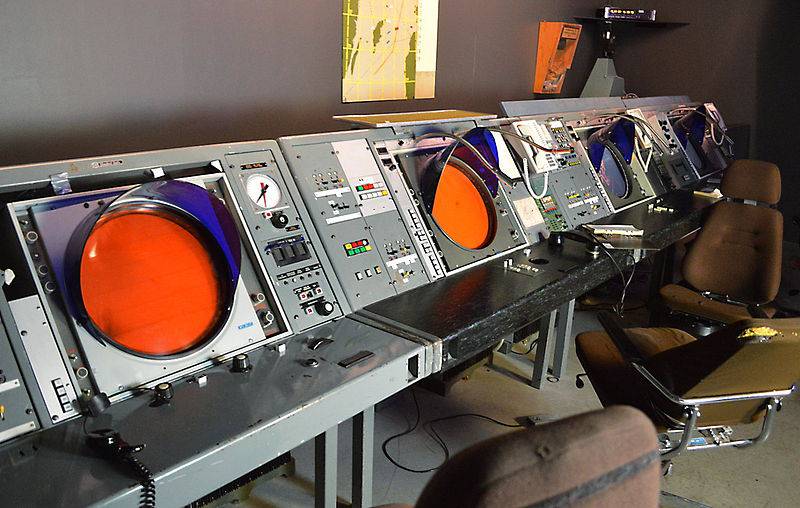
Radar Information Display Systems STRIL-60
The equipment of the "Digitrak" complex, created on the basis of solid-state electronic modules, made it possible, in accordance with the requirements, to form complex systems that can perform the following functions:
- display raw radar data;
- generate and display symbols;
- determine the trajectory and speed of flight of the target;
- to process radar data;
- implement automatic tracking of targets;
- ensure the processing of height data;
- display data on various indicator devices;
- interface with other computers.
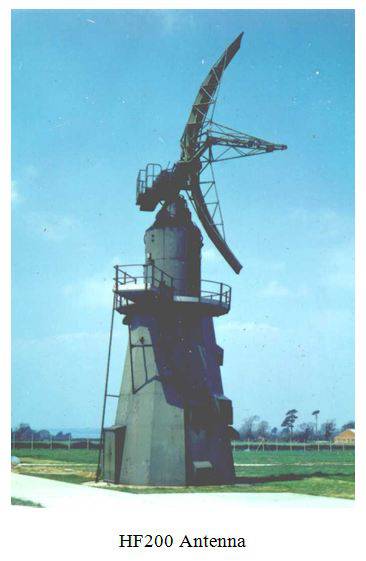
The Stril-60 system used information from the network of ground, ship and radar stations as the initial data. The equipment "Digitrack" was mated with the majority of the types of radar systems that existed at that time in Sweden. Radar information was received via specially laid protected cable lines, as well as through high-frequency radio channels. It was also envisaged to obtain data from the posts of visual observation. The technical solutions incorporated in the development of the Stril-60 system allowed it to remain sufficiently capable until the beginning of the 90-s with periodic upgrades of hardware and computing facilities.
The main long-range means of detecting airborne targets in the 50-70 years were four fixed radar posts composed of Type 80 meter radar (Swedish designation PS-08) and Deca HF-200 radio altimeters built in the southern part of the country. Radar equipment was received from the UK.
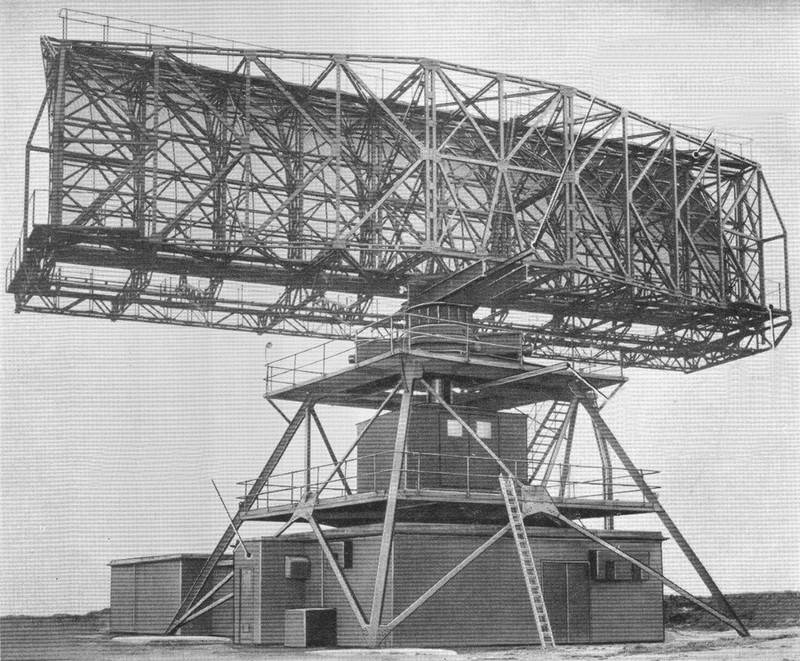
In addition to the PS-08 radar, in conjunction with French and Italian developers from the beginning of the 60-s in Sweden, the PS-65 radar of the decimeter range was produced. In total, 90 radar posts functioned before the start of the 9s. Since 1966, the launch of the centimeter-range PS-15 radar began. This station was a licensed version of the British radar ARGUS 2000. The radar antenna was installed on the 100 meter mast, which made it possible to detect low-flying targets at a distance of up to 45 km.
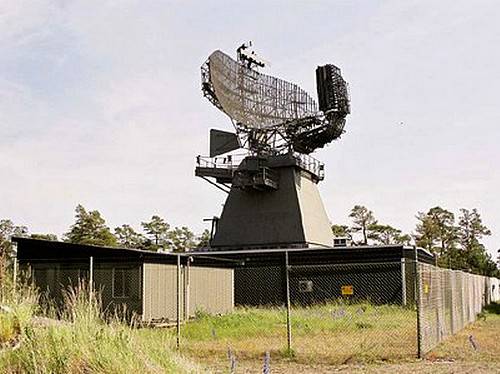
At the beginning of the 70-x in the "Stril-60" were integrated stationary radar meter range PS-66 production Thomson-CSF. In total, 5 of such stations were built in Sweden, they were in operation until 2003.
When targeting fighter-interceptors, the automated system Stril-60 not only brought the interceptor to the target area, where it searched for its own radar, but also transmitted data on the direction of attack, navigation parameters, altitude, speed and course of the target, and also calculated the optimal distance missile launch. After the commissioning of the system "Stril-60", due to the high automation of processing and high-speed data transmission, the number of air defense sectors was reduced from 11 to 7.
After the NATO air defense system “Nage” was commissioned in 1974, information exchange channels with the Swedish system “Stril-60” were organized. In turn, the Swedes received data from fixed radar stations located in Denmark, Norway and Germany. In the 1990-e years, "Stril-60" was replaced by "Stril-90", which is a modern combat control system integrated with DRLO aircraft and JAS-39 Gripen fighter jets. The control center of the Swedish air defense system is located at Uppsala airbase in 70 km north of Stockholm.
In the first post-war decade, the ground component of the Swedish air defense system was based on the Bofors 105, 75 and 40-mm anti-aircraft guns of the American production. However, it soon became clear that anti-aircraft guns alone, even those guided by radar stations, are not able to effectively protect modern bombers from attacks, and interceptors can be connected with escort fighters or blocked at aerodromes.
At the end of 60, Sweden bought FIM-43 Redeye MANPADS in the USA, which were designated as RBS 69 and medium-range air defense missile systems MIM-23 Hawk. At the same time, in the 80-e years, the Swedish Hoki were upgraded to increase reliability, noise immunity and increase the likelihood of hitting the target.
In 1965, in the UK, 9 long-range Bloodhound batteries were purchased. While in their homeland the last complexes of this type were written off in the 1990 year, in Sweden they were on duty on duty until the 1999 year.
Simultaneously with the purchase of air defense equipment abroad, in Sweden itself, work was being done to improve existing and create new designs. Based on well-proven 40-mm anti-aircraft machine 40-mm Bofors L60 new gun Bofors L1951 was created in 70, under the more powerful ammunition 40 × 364R a bit lightweight to 870 g projectile, which increased the initial rate of up to 1030 m / s. In addition, the anti-aircraft gun received a new carriage, recoil mechanism and loader system. In November, 1953, this gun was adopted as a standard NATO anti-aircraft gun, and soon it began to be produced in thousands of series. During the years of production, several variants of this anti-aircraft gun were created, which differed in the power scheme and sighting devices. Recent modifications have an 330 rate of fire / rpm.
40-mm anti-aircraft guns Bofors L70 is still in service in the Swedish army. The fire of anti-aircraft batteries is controlled by a radar computerized guidance system. 40-mm fragmentation projectiles with a programmable detonation point have been created for anti-aircraft guns. The Bofors L70 cannon is used as the “main caliber” in the CV9040 BMP and in the ZNS CV 9040 AAV.
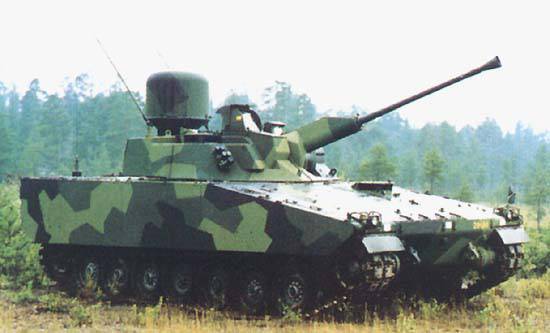
The main external difference ZSU from the BMP is the search radar "Thales" TRS 2620 at the rear of the tower. A batch of 27 serial anti-aircraft installations CV 9040 AAV released at the end of 90-ies, and this is the only anti-aircraft self-propelled installation, which is in service with the Swedish army. It is intended mainly to combat combat helicopters.
In 1967, work began on creating a new short-range air defense system. In parallel with the anti-aircraft complex, a mobile pulse-Doppler radar for detecting and targeting the PS-70 / R operating in the 5,4-5,9 GHz band was designed. Later this station became widely known as the PS-70 Giraffe. At the moment there are several modifications of the station, a common feature of all of them is a folding mast, which raises the antenna above the folds of the terrain. Radar antenna rises to a height of 12 meters. The PS-70 Giraffe can be mounted on different chassis, including the all-wheel drive Tgb-40 three-wheel-drive truck and the Bv-206 tracked carrier. The deployment time of the radar is no more than 5 min. The radar calculation consists of five people who provide tracking of three targets in manual mode, serving up to nine fire crews.
The first version with the 40 km detection range was designed to control the 20 and 40-mm anti-aircraft guns, as well as to target the short-range RBS-70 anti-aircraft systems. Further modifications of the PS-701, PS-707, PS-90, Giraffe 1X, Giraffe 4A and Giraffe 8A followed. To date, the Swedish radar of this family are among the best in its class. The latest radar variants are three-dimensional and have an active electron scanning antenna array (AFAR), and are capable of detecting air targets at a distance of 180 km.
The first Swedish air defense missile system became RBS-70 with laser-guided missiles, which was put into service in the 1977 year. Although it is positioned as portable, from the very beginning, the complex was intended to be installed on different chassis. RBS-70 occupied a niche between the 40-mm anti-aircraft guns L70 and the MIM-23 Hawk SAM system. The RBS-70 air defense system in the Swedish armed forces is provided by air defense units of the battalion-company unit. The weight of the complex as a whole is more than 100 kg and it can be called a portable stretch. The launch range of the first version was 5000 meters, the height of the targets hit was 3000 meters. In the Rb-70 rocket, a combined fragmentation-cumulative warhead with armor penetration is used on the latest types of missiles to 200 mm armor steel. The use of guidance on the laser channel and the combined warhead allow you to use the complex for firing at ground and surface targets. In the event of a miss, the air target is hit by ready-made killer elements - tungsten balls.
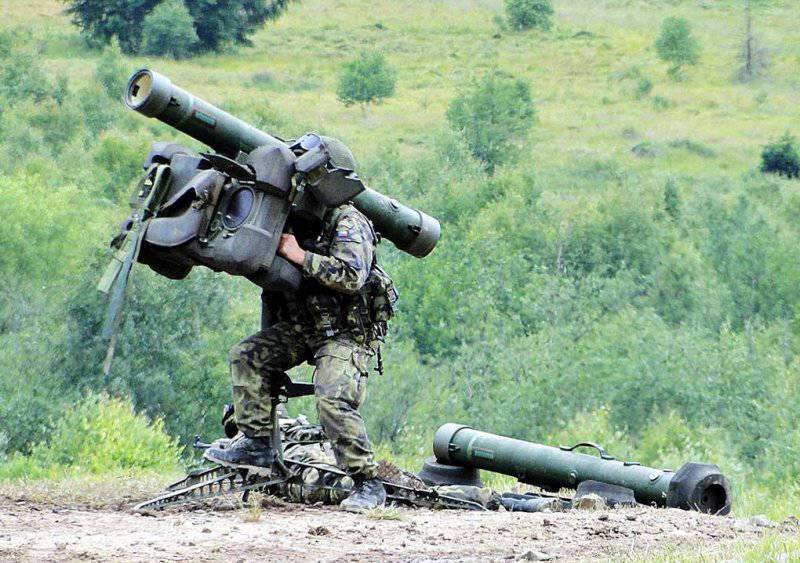
The structure of the RBS-70 system includes:
- 2 SAM in TPK (total weight 48 kg);
- the guidance unit (weight 35 kg), consists of an optical sight and a laser beam forming device;
- “friend-foe” identification equipment (weight 11 kg),
- power supply and tripod (weight 24kg).
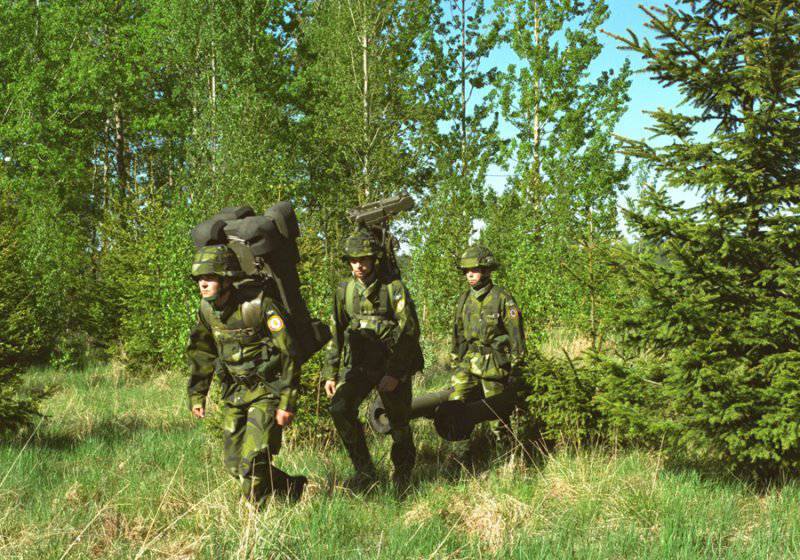
In comparison with other modern MANPADS, the RBS-70 wins in firing range, especially on a collision course. The main drawback of the complex is a large mass (PU and two missiles in TPK weigh about 120 kg). Carrying the complex for long distances is difficult and you have to use vehicles or mount it on different chassis. It cannot be applied from the shoulder, carried or used in the field alone. The command-based method of guiding missiles requires good training and psychological stability from the RBS-70 operator. Accompanying the target takes 10-15 seconds. The operator needs to quickly assess the distance to the target, its speed, direction and altitude to make a decision on the launch of the rocket. At the same time, the missile defense system is not sensitive to disturbances organized for MANPADS with TGS. But at the same time, certain restrictions may arise when the transparency of the atmosphere deteriorates, making it difficult to pass the laser radiation.
Over the years, more than 1500 sets of air defense missile systems were produced, of which about 70% for export deliveries. According to the manufacturer Saab Bofors Dynamics, the total number of missile training launches has now exceeded 2000. At the same time, about 90% training targets were affected. This is a fairly high figure, but it should be understood that the launches were carried out, as a rule, in ideal meteorological conditions, from prepared positions, on low-speed, non-maneuvering unmanned targets or aerostats simulating hover helicopters. During firing on the proving ground, the life of the operator of the air defense missile system is not in danger, which predetermines a normal emotional and psychological state. As is known from the experience of conducting combat operations, during a stressful situation, the number of misses increases many times.
The improvement of the RBS-70 air defense system was conducted in the direction of increasing reliability, probability of defeat, the power of the warhead, range and reach of height. The first improved versions of missiles Rb-70 appeared at the beginning of the 90-x. The probability of hitting subsonic targets with the Rb-70 Mk2 rocket is 0,7-0,9 on a heading course and 0,4-0,5 - on a follow-up course. At the beginning of the 2000-x based on the Rb-70 Mk0, Mk1 and Mk2 missiles a new Bolide missile system was created. Thanks to the use of a new composition of jet fuel, the maximum flight speed of the Bolide missile defense system reaches 680 m / s. The maximum range of launch is 8000 meters, reach height - 5000 meters. In 2011, the company Saab Bofors Dynamics announced the start of deliveries to the Swedish armed forces of a new version of the air defense system - RBS 70 NG. The upgraded version received an improved system of aiming and viewing, capable of detecting targets at night, also reduced clotting time and deployment.
On the basis of the RBS-70 ADMS, the mobile anti-aircraft complex RBS-90 was developed on the chassis of an amphibious articulated tracked carrier BV 206s. The calculation of the RBS-90 is four people: the driver, the commander (he duplicates the radar operator), the missile guidance operator and the PS-91 radar detection operator. The equipment of the combat vehicle includes: a power generator, communications equipment, PS-91 radar detection, television and thermal imaging equipment for tracking the target, remote launchers and missiles at the TPC. At the combat position, the data on the coordinates of the target are transmitted via cable to a paired remote-controlled launcher, which is located on a tripod. It also contains the missile guidance equipment along the laser beam. When changing positions, PU is folded and placed inside the tractor. The deployment time of the complex is about 8 min.
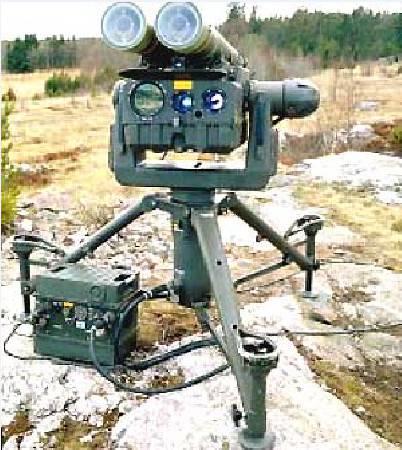
The three-coordinate pulse-Doppler radar of target detection PS-91 installed on the combat vehicle has a detection range of hovering helicopters up to 10 km, airplanes up to 20 km. The PS-91 station provides simultaneous automatic tracking of 8 targets and has a built-in "friend-foe" identification system.
Elements of the Rb-70 SD were used to create the short-range RBS-23 BAMSE SAM system. The development of this complex was carried out since the beginning of the 90-x. The aim of the program was to create a complex that has an interception zone close to the medium-range air defense system, with a significant reduction in the total cost of the complex. It is designed to hit air targets at ranges up to 15 km, at altitudes from several tens to 15000 meters.
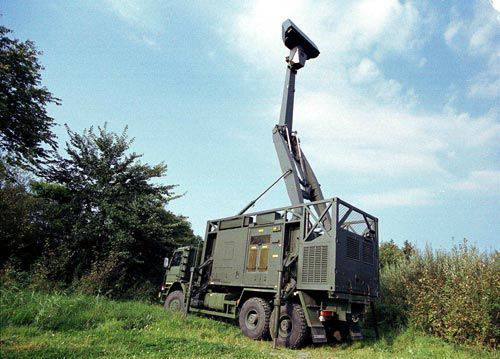
The anti-aircraft complex consists of a three-coordinate radar for detecting targets, and three towed MCLV (Missile Control and Launch Vehicles) missile launchers that can be equipped with a BAMSE or RBS-70 anti-aircraft missile for customer’s choice. SAM BAMSE have almost twice the long launch range. Survey three-coordinate monopulse radar type Giraffe AMB-3D with a phased array antenna capable of detecting targets at a distance of 100 km. The radar antenna with the mast device is extended to a height of 12 m, which allows you to place the battery control point in the shelter and in the folds of the terrain.
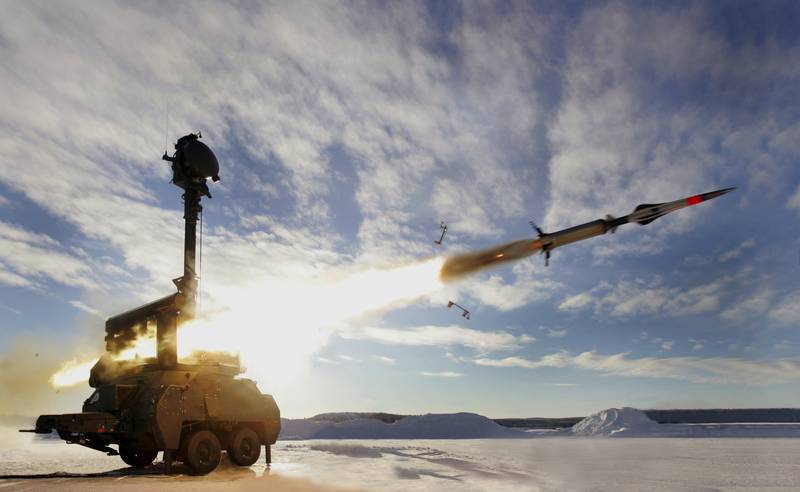
The MCLV towed launcher is capable of autonomous combat operations, which increases the survival rate of the complex. The deployment time of the installation is about 10 minutes, the recharge time is 3 minutes. On the mast device, which can rise to a height of up to 8 meters, are placed: a guidance radar antenna, a thermal imager and an interrogator of the friend-foe recognition system. A missile is aimed at a target by radio teams. The launcher has 6 missiles ready for use.
According to its data, the RBS-23 BAMSE complex is a typical military air defense system. But at the same time, in its concept, it is closer to the object defense complexes. Uncertainty with the purpose of the complex and budgetary constraints led to the fact that the RBS-23 BAMSE system was not built in significant quantities.
At the moment, the requirements of the Swedish air defense troop defense system are completely met by the air defense systems of the near-field zone RBS-70 and RBS-90. In addition, in the 80-90-s several hundreds of RBS-70 air defense systems were installed on the chassis of the Lvrbv 701 and MT-LB. The installation on the basis of MT-LB under the designation Lvrbpbv 4016 was used before the 2012 year. After that, 300 machines were sold to Finland. Lightly armored tracked tractors arrived in Sweden from the Federal Republic of Germany, whose authorities in 90 were actively selling off the legacy of the GDR army.
In the last decade, Sweden is increasingly drifting towards NATO. Hysteria about the “Russian” submarines and the flights of our aircraft in international airspace does not abate in the country. All this allegedly threatens the security of Sweden, and therefore the purchase of new air defense systems is vital.
In March 2013, the Agency for the Material Support of the Armed Forces of Sweden announced the signing of a contract with the German company Diehl Defense worth $ 41.9 million for the supply of new short-range anti-aircraft missile systems IRIS-T SLS. The number of supplied systems is kept secret, and deliveries must be made in 2016.
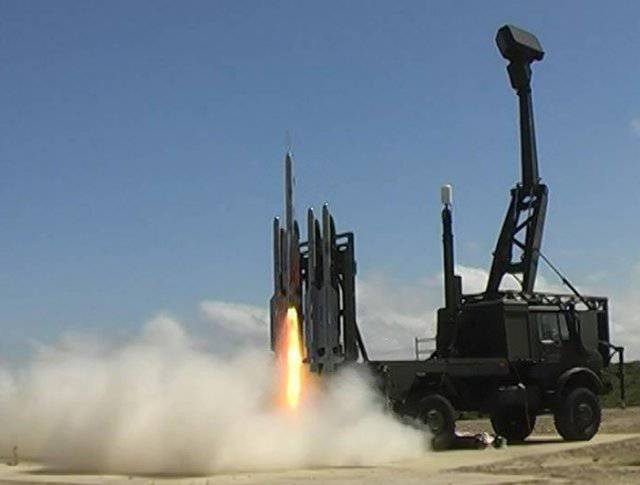
SAM IRIS-T SLS designed in accordance with the requirements of the Armed Forces of Sweden. The complex includes a vertical start launcher, a target designation system and a fire control system. For use in the SAM adapted air combat missiles IRIS-T. A rocket launched vertically at the final stage of the trajectory is induced by an infrared homing head (IR GOS). At the initial stage, the trajectory correction is carried out using the radio commands of the Giraffe AMB radar station. This station provides the ability to detect targets at a distance of more than 100 kilometers and an altitude of more than 20 kilometers, while simultaneously accompanying 150 targets. The range of destruction of the air targets of the system IRS-T SLS - 20000 meters.
According to the commander of the US armed forces in Europe, Fredrik Ben Hodges, Sweden, in the event of a threat to its security, may receive the weapons it currently lacks to protect its airspace. In this case, meant the long-range air defense systems MIM-104 Patriot. According to Defense News, announced in June 2016, Sweden and France are negotiating the purchase of Aster-30 anti-aircraft systems. This was reported to the military edition by a high-ranking French official at the Paris exhibition of arms and military equipment Eurosatory. The range of launch of Aster-30 missiles reaches 120 km, height - 20 km. In addition to airborne targets, the complex is able to fight operational tactical ballistic missiles.
Sweden is also considering a NASAMS anti-aircraft missile system. This was announced by Kurre Lohne, vice-president of the Norwegian concern Kongsberg Gruppen, who developed this air defense system together with the American company Raytheon. Apparently, this is not about acquiring one or two long-range anti-aircraft systems, but about creating a centralized, echeloned multi-level system based on the latest automated control systems, radar stations and DRLO aircraft, which include small, medium and large air defense missile systems range.
Based on:
http://weapons-world.ru/books/item/f00/s00/z0000008/st035.shtml
http://saab.com/air/gripen-fighter-system/gripen/gripen/
http://saab.com/stories/2014-11/ready-for-combat/
http://saab.com/land/weapon-systems/ground-based-air-defence-missile-systems/BAMSE/
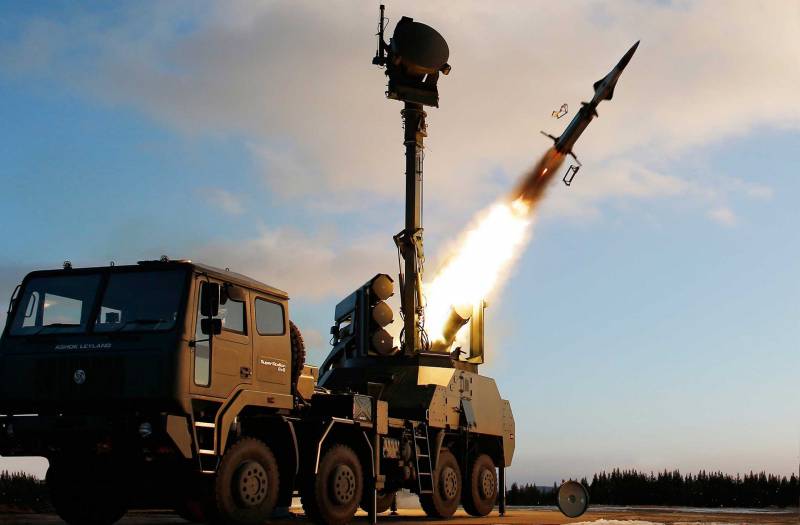
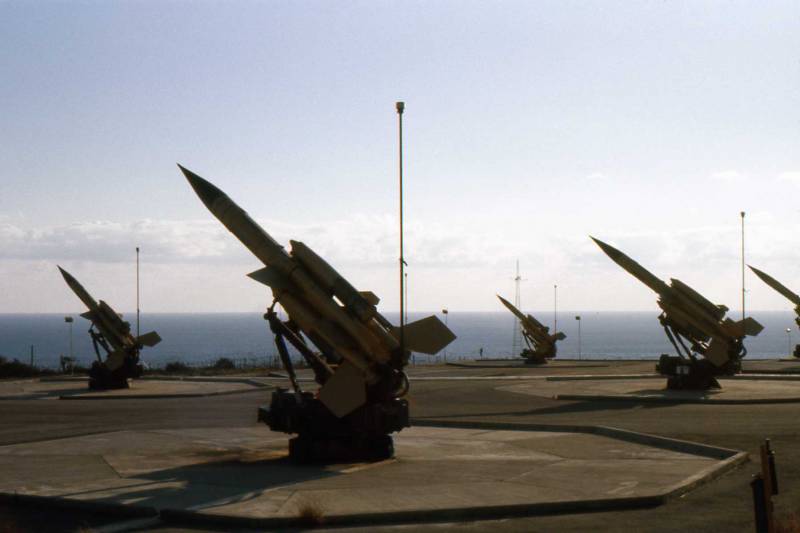
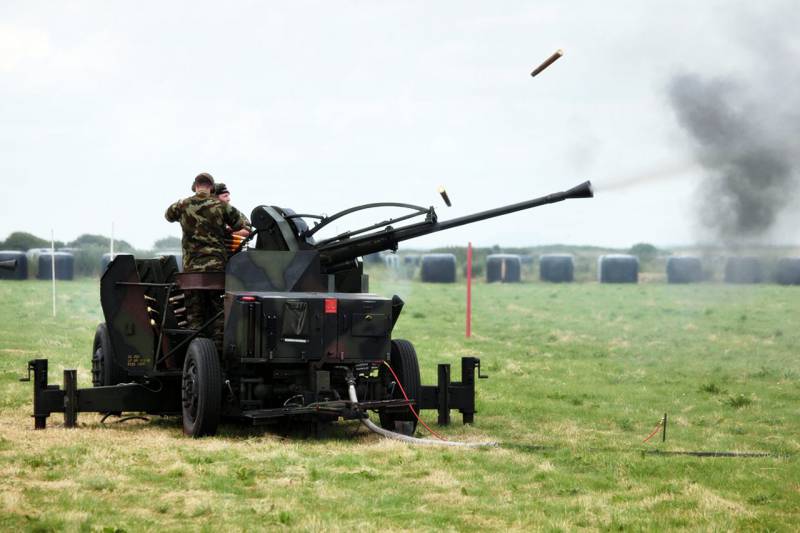
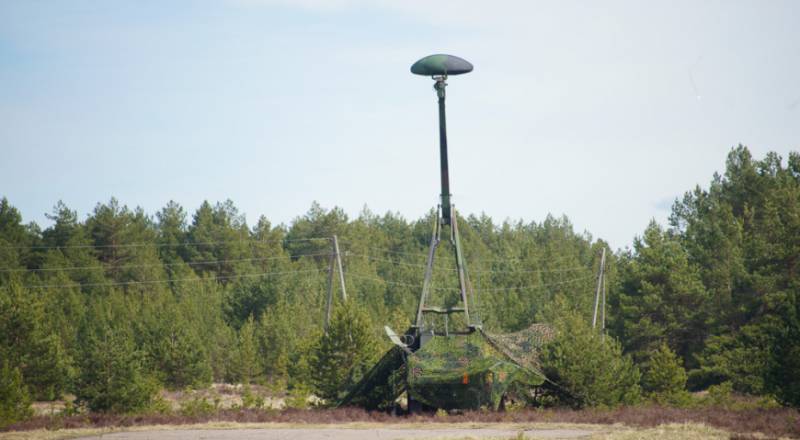
Information